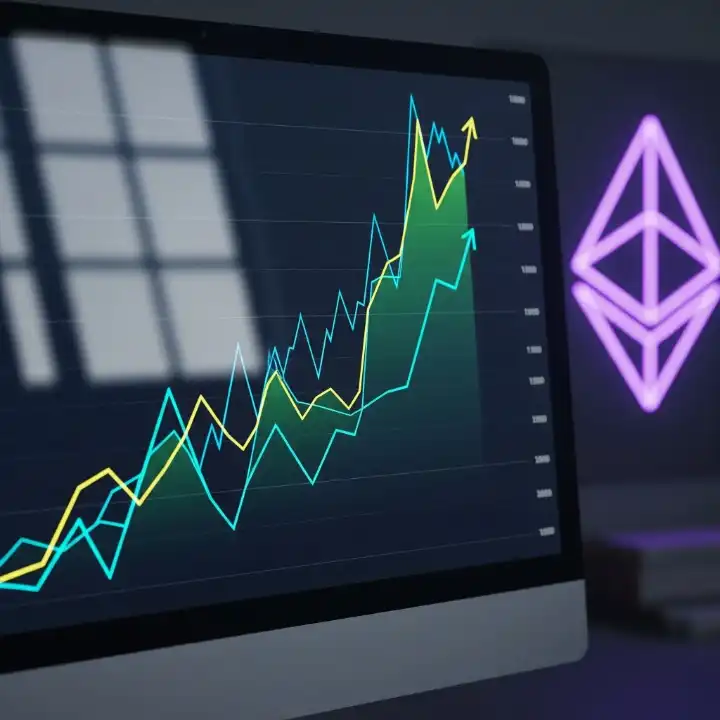I remember meeting a longtime client last year who knew all about Bitcoin but hesitated every time I mentioned Ethereum. “Isn’t it just another cryptocurrency?” they’d ask. That changed when spot Ethereum exchange-traded funds (ETFs) hit the market. Suddenly, institutions could access ETH as easily as a stock, driving in billions and sparking a wave of fresh interest among even the most traditional investors. Understanding Spot Ethereum isn’t just a trend it’s essential for anyone serious about navigating today’s digital finance landscape.
Why Spot Ethereum Matters for Businesses and Investors
Spot Ethereum ETFs let investors buy shares that directly correspond to actual Ethereum holdings, rather than betting on price movements through derivatives or futures. This distinction is huge. It means that investment flows directly increase the demand for ETH itself, making every inflow a tangible force in the market.
The recent launch and adoption of spot Ethereum ETFs in the U.S. created massive buzz, with daily inflows smashing previous records:
-
On August 11, 2025, U.S. spot Ethereum ETFs netted over $1 billion in daily inflows, their biggest single-day haul yet.
-
BlackRock’s ETHA ETF scooped up $640 million in a day, while Fidelity’s FETH attracted $277 million.
-
In total, spot Ethereum ETFs have amassed $10.8 billion in cumulative inflows, accounting for nearly 5% of all ETH market capitalization.
-
ETH’s price surged by 45% in just 30 days, trading near $4,620 and approaching its all-time high, fueled by ETF activity and corporate treasury accumulation.
This isn’t just noise, these record inflows reveal a genuine shift in how businesses and large investors treat Ethereum, moving beyond speculation to real, on-chain exposure.
Spot Ethereum Unpacked: Breaking Down the Fundamentals
Let’s approach Spot Ethereum by breaking it down into its core concepts:
1. What is Spot Ethereum?
-
A “spot” ETF buys and holds the actual asset in this case, Ethereum (ETH) rather than betting on its price through contracts.
-
Investors in spot Ethereum ETFs own a stake in physical ETH, held by the fund. Their net inflows mean that more ETH is acquired directly on behalf of shareholders.
2. Why Are ETFs Driving Such Big Movements?
-
ETFs offer regulated, mainstream channels for institutions to access crypto. This opens the door for pension funds, asset managers, and corporate treasuries previously wary of direct crypto holdings.
-
Inflows mean more ETH is taken off exchanges and held for the long term a bullish signal as supply drops and demand rises.
3. Who Are the Main Players?
-
BlackRock leads with its ETHA fund, dominating inflow records.
-
Fidelity, Grayscale, VanEck, and others have joined the fray, pooling capital and rapidly accumulating ETH reserves.
4. How Does This Change the Crypto Landscape?
-
Spot Ethereum ETFs legitimize ETH as a treasury asset, with over $13 billion in corporate ETH holdings already reported.
-
Traditional finance now sees ETH as the backbone for future markets, while Bitcoin maintains its “digital gold” status.
Practical Strategies: Navigating Spot Ethereum for Your Portfolio
So, what should investors and strategists do in this rapidly evolving ecosystem? Here are step-by-step tips:
-
Check ETF Flows:
-
Regularly review spot ETH ETF inflows, as spikes can precede rallies or lulls. Major inflow days often signal mounting institutional hype.
-
-
Assess Fund Composition:
-
Not all ETFs are equal; some charge higher fees or manage ETH exposure differently. Choose funds that align with your goals for liquidity, risk, and regulation.
-
-
Integrate Ethereum Into Treasury Planning:
-
For cash-rich businesses, corporate ETH holdings are expanding as alternatives to cash and traditional bonds. ETH’s blend of yield and price appreciation has caught attention in treasury circles.
-
-
Hedge with Bitcoin and Altcoins:
-
Spot Ethereum ETFs have surpassed Bitcoin ETFs in recent inflows, but market cycles shift. Diversify holdings to minimize risk tied to any single asset’s momentum.
-
-
Monitor Regulatory News:
-
ETF launches, approval processes, and government frameworks (like the new GENIUS Act) reshape crypto’s risk profiles. Adjust exposures as regulations evolve.
-
Common Challenges and How to Respond
Adopting Spot Ethereum brings both opportunity and pitfalls. Here’s what experts say:
-
Misunderstanding ETF Risks:
While ETFs simplify crypto access, price swings, management fees, and tracking errors remain real. Always compare ETF tracking to ETH’s spot price. -
Liquidity Traps:
Rapid inflow days, while bullish, can mean short-term overbought conditions. Plan for corrections if ETF-driven buying pauses or reverses. -
Regulatory Uncertainties:
Changing legal frameworks (as seen with stablecoin regulations) can impact trades and fund operations. Stay updated on SEC and CFTC moves. -
Overconfidence in Institutional Flows:
While big inflows validate Ethereum, sudden profit-taking or sector rotation can trigger volatility. Use staggered investment entries and monitor ETF share creation/redemption cycles.
Spot Ethereum’s Big Picture: Shifting Power and Market Narratives
Spot Ethereum marks a new era for digital assets the moment institutions and retail investors started treating ETH as a core allocation, not just a speculative altcoin. The $1 billion record inflow wasn’t a fluke; it built on months of increasing confidence, price rallies, and regulatory clarity.
Corporate treasuries, asset managers, and even pension funds face fewer barriers to ETH exposure than ever.
For business leaders, integrating ETH either directly or through ETFs offers a hedge against currency devaluation, inflation, and stagnant yields elsewhere.
For investors, Spot Ethereum is now a crossroads whether using ETFs, holding ETH directly, or blending baskets with Bitcoin and other altcoins. The days of crypto as a fringe speculative tool are fading; mainstream capital is setting the new pace.
Wrap-Up: How to Stay Ahead with Spot Ethereum
Spot Ethereum has moved from curiosity to cornerstone in the financial world, offering clear, regulated access to one of blockchain’s most dynamic assets. Investors should:
-
Track ETF inflows and fund performance.
-
Weigh ETF alternatives and direct holdings for risk and yield.
-
Follow regulatory changes and diversify wisely across assets.
-
Stay patient; markets move in waves, and institutional flows are just one part of the story.
Got thoughts about how Spot Ethereum might reshape your strategy or business?
Share your views in the comments, or speak with a financial advisor to see how ETH fits in your portfolio.





